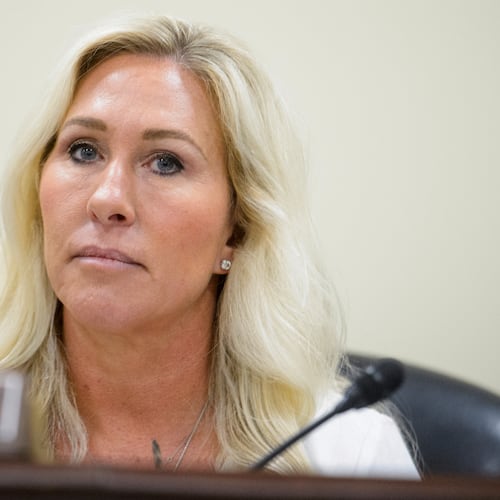Gwinnett County is unveiling this week a system that will allow it to extract phosphorus from its wastewater to sell as fertilizer.
With the new technology, the county could profit from something that has cost money to dispose of in the past.
Phosphorus exists in human waste, and has to be removed before treated water can be sent back to lakes and rivers. Under the old system in Gwinnett, phosphorus built up in pipes and hardened when it was mixed with other chemicals. It had to be scraped out at a cost of about $100,000 a year and sent to landfills.
The county’s new nutrient recovery process removes phosphorus before it hits those pipes. Instead of throwing the phosphorus away, the county now sells it to the Canadian company Ostara, which in turn provides it to golf courses and farms.
Gwinnett spent $15.2 million to became the ninth facility in the world to have the technology produced by Ostara and is currently responsible for about 20 percent of the company’s production of fertilizer “pearls,” known as Crystal Green, Ostara CEO Phillip Abrary said.
Abrary said the process allows the county to “upcycle” what had been waste phosphorus in the past into a slow-release, environmentally friendly fertilizer.
The county expects to make about $220,000 a year through fertilizer sales. In addition to saving $100,000 annually in pipe cleaning costs, Gwinnett expects to save $600,000 a year in chemicals that it no longer needs to purchase and $250,000 a year in reduced waste disposal costs, said Ron Latimer, vice president of Hazen & Sawyer, a consulting firm.
“The problem was getting worse,” Latimer said. “The problems were more than creating a heartache for the plant.”
The project is expected to recoup its cost in 10 to 15 years.
Gwinnett has one of the strictest phosphorus limits in the country because of an agreement with the Lake Lanier Association, said Jeff Boss, deputy director of facilities for the Department of Water Resources. Letting too much phosphorus back into Lake Lanier, where the plant discharges its water, leads to algae blooms.
After phosphorus-heavy liquid is drained from solid waste at the treatment plant, it is mixed with an ammonium-filled liquid. When the two mix in a reactor, they create small, phosphorus-heavy seeds. Instead of coating pipes, the phosphorus pearls are now being sold back to Ostara as fertilizer.
Gwinnett is the first place in the state using the technology, but the city of Atlanta recently requested proposals for a similar project.
With the installation of the nutrient recovery system, the county is moving even further away from using the F. Wayne Hill Water Resources Centeras simply a facility for treating water, Boss said.
In addition to making fertilizer, the plant uses excess methane to power a generator at the site. It has recently purchased electric vehicles for travel around the area, which are powered by the generator. The department is also beginning a study to clean wastewater well enough that it can be used as drinking water without having to be released back to Lake Lanier and cleaned again.
“We want people in Gwinnett County to know how we’re spending their money. We want them to be proud,” Boss said. “If this was a pig, there’d be nothing left. We even use the squeal.”
The county will continue to look for ways the plant can make money off the waste it processes. In addition to helping to save money, Latimer said, the processes are better for the environment.
“There’s going to be a time when nothing leaves this plant as a debit,” Boss said. “We have a lot of irons in the fire.”
About the Author
Keep Reading
The Latest
Featured



